How many foods that start with J have you experienced? Tasting the signature food of a culture is a way to experience and gain insight into the mainstream life of locals.
And to do that, having a well-prepared, well-described list of food with you is essential.
Today I’m bringing to you a comprehensive list of some interesting yet delicious foods that start with J, such as dishes, vegetables, fruits, and other foods.
Some of these are widely known, but others are so exotic that you might never have heard of.
Brief information about its origin, taste, texture, and uses are included; that technically covers everything that you need to know! Can’t wait any longer? Let’s jump right in!
35 Foods that Start with Letter J with Filters
Explore 35 enticing foods beginning with J and use the filter to navigate through categories like dishes, dairy, fruits, vegetables, and more for easier discovery.
Jerky
- Meat
Jerky is made from lean meat, often beef, pork, or game like deer and bison, which is dried and cut into thin strips.
The meat is typically marinated with seasonings and smoked on low heat, with salt added to enhance flavor and inhibit bacterial growth.
People typically consume it as a convenient and tasty snack. Plus, jerky requires no additional preparation and has a long shelf life, making it ideal for situations like camping where refrigeration is not available.
Jelly
- Candy/confectionery
Jelly is a food item typically made by boiling fruit juice with sugar and a gelling agent (like pectin, gelatin, etc.) until it reaches a semi-solid or gel-like consistency.
They can be a dessert served in individual portions.
When used as a spread, jelly has a smoother and more spreadable consistency. It’s firm enough to hold its shape but soft enough to spread easily on bread or pastries.
Overall, jelly is clear, smooth, and often comes in bright, translucent colors.
The flavor of jelly varies depending on the fruit used, ranging from sweet to tart.
Jam
- Condiments
Jam is a preserved fruit spread made by cooking fruit pulp with sugar and acid, typically lemon juice, until it reaches a thick, saucy texture.
It can be made from various fruits, with berry jams being particularly popular, and marmalade is a specific type made from citrus fruits.
Jam is commonly used as a spread for bread and sandwiches or as a filling in baked goods.
To enhance flavor and extend shelf life, spices and preservatives are often added.
Jerk Chicken
- Dishes
Jerk chicken is a famous Jamaican delicacy with an intensely spicy and smoky flavor.
Its marinade is one of the most important components. It features a blend of allspice and fiery Scotch bonnet peppers, a mix of cloves, cinnamon, scallions, nutmeg, thyme, garlic, and salt.
This mixture infuses the chicken with a depth of flavor and heat.
Traditionally, the chicken is slow-cooked over a grill, allowing it to absorb the smoky essence while retaining its juiciness.
It’s commonly served with cooling sides like rice and peas, sweet plantains, or coleslaw, creating a balanced and satisfying meal.
It’s also a staple at local street food stalls as well as in restaurants across the globe.
Jambon
- Meat
It is a popular European processed meat made from pork legs, with each region offering its unique version, like Spain’s Jamon and Italy’s Prosciutto.
The curing process varies by region, resulting in distinct types.
Dry-cured jambon is more flavorful and drier, wet-cured is softer and less salty, while smoked jambon features a woody aroma.
Typically served fresh and uncooked in thin, aesthetically rolled slices, jambon is salty enough to enhance bland dishes and pairs well with unsalted butter.
Jiaozi
- Dishes
Jiaozi are Chinese dumplings made with dough wrappers filled with a variety of ingredients like pork, beef, chicken, shrimp, and vegetables such as scallions and cabbage.
It’s sometimes referred to as potstickers in the West.
As a staple in Chinese cuisine, jiaozi holds cultural significance, especially during Lunar New Year celebrations.
These dumplings symbolize prosperity due to their shape resembling ancient Chinese money, with some even hiding a lucky coin inside for fortune.
Johnnycake
- Bread
Johnnycake (aka journey cake, Johnny bread, or Shawnee cake) is a North American dish traditionally made from cornmeal, water (or milk), and salt, cooked like pancakes.
Originating from Rhode Island, this versatile treat has gained widespread popularity across the US, Canada, and the Caribbean.
Often enhanced with sweeteners and served hot with butter, maple syrup, or apple sauce, johnnycakes are ideal for breakfast or brunch.
Jaffa Cake
- Dishes
Jaffa cake is a popular British snack introduced in 1927. It consists of three layers: a soft, spongy cake base, a middle layer of orange jelly, and a chocolate coating on top.
The base is light and airy, providing a soft contrast to the chewy jelly. The jelly itself is often tangy with a citrus note, which pairs excellently with the rich, bittersweet chocolate on top.
While the classic flavor features orange jelly, variations like strawberry and blackcurrant are also available.
Jaffa cakes are typically small and circular, making them a perfect bite-sized treat.
Jambalaya
- Dishes
Jambalaya is a rice dish of Louisiana Creole cuisine.
It blends influences from West Africa, French, Spanish, and other Southern U.S. culinary styles into a flavorful dish.
It typically combines various meats like smoked sausages, chicken, pork, or seafood with a sautéed vegetable base of onions, celery, and bell peppers.
The dish is cooked in a single pot, where the meat and long-grain white rice are simmered together with seasonings and broth.
Jianbing
- Dishes
Jianbing is a type of savory crepe that originates from northern China. It’s a popular Chinese street food, often served as a breakfast dish.
The base of jianbing is a thin, crispy batter made from wheat and grain flour, which is spread onto a hot griddle. Once the batter begins to set, an egg is cracked and spread over the top.
The crepe is then typically brushed with various sauces, such as a combination of hoisin and chili sauce. Green onions, cilantro, and sometimes pickled vegetables are sprinkled on top.
Once all the ingredients are layered, the jianbing is folded into a square or rolled up, making it easy to eat on the go.
Japchae
- Dishes
Japchae is a traditional Korean dish featuring stir-fried sweet potato glass noodles, which are known for their chewy texture.
The dish contains colorful vegetable, such as spinach, carrots, and onions, along with thinly sliced meat, typically beef.
Japchae is seasoned with soy sauce, sesame oil, and a touch of sugar, creating a savory yet slightly sweet flavor profile.
This dish can be served as a side or a main course and is often a staple at Korean feasts and celebrations.
Jollof
- Dishes
Jollof is a flavorful dish combining rice, meat, and vegetables. It’s a staple in West African countries like Liberia, Ghana, and Nigeria.
It’s primarily cooked in a base of tomato stew or puree, seasoned with herbs and spices like Nigerian curry powder and thyme.
The rice absorbs the rich tomato sauce, resulting in a vibrant red color and a deeply infused flavor.
Often accompanied by meats such as beef, chicken, or seafood, jollof is a hearty treat.
Jalebi
- Dishes
Jalebi (or jilapi, zulbia, and zalabia) is a well-loved sweet treat in South Asia (like India, Pakistan, and Bangladesh).
Made by deep-frying thin dough spirals and soaking them in sugar syrup, Jalebi has a chewy texture and a sweet taste.
They are also known for their bright orange or yellow color and distinctive coiled shape.
Jalebi is commonly enjoyed as a celebratory food on special occasions, festivals, and as a street food.
It’s often served hot or at room temperature, sometimes accompanied by yogurt or other sweets.
Jellied Eels
- Dishes
Jellied eel is a traditional British dish dating back to the 18th century. Originated in London, it’s considered as an affordable and nutritious food.
Made by boiling freshwater eels in water and vinegar, the eels release collagen into the stock, which is flavored with nutmeg and lemon juice, and then chilled to form a jelly.
Traditionally served with pie and mash, it was a staple for London’s working class.
While now less common in shops, jellied eels can still be made at home with various herbs and spices for different flavors.
Jaffle
- Dishes
Jaffle is an Australian-style sandwich with its distinctive clamshell-patterned triangle shape and sealed edges.
It includes two slices of bread with a versatile choice of fillings, ranging from vegetables, cheese, and meat, to seafood. They are a convenient and tasty option for snacks or breakfast.
Plus, jaffles are made with a special Jaffle iron toaster, designed by an Australian engineer.
Jameed
- Dairy
Jameed is a traditional dairy product from the Middle East.
It is made from fermented goat’s or sheep’s milk. The process involves fermenting milk in cheesecloth until it thickens, then hardening it with salt into a compact, round ball.
It can be sun-dried to a yellow shade or shade-dried to remain white, allowing it to be stored at room temperature.
Popular among Bedouins (a group of people living in the desert), jameed is a key ingredient in traditional dishes like “manaf”, where it’s used to cook lamb, often served with rice.
Jell-O
- Dishes
Jell-O is a popular brand known for its range of sugary, gelatin-based snacks.
It is normally available as ready-to-eat or powdered mixes that solidify when refrigerated.
These treats come in various fruit flavors and are often served with cream and fruits, making them a colorful and low-calorie addition to tea time or coffee breaks.
Jägerschnitzel
- Dishes
Jägerschnitzel, or “hunter’s cutlets,” is a traditional German dish, originally made with venison or wild boar loin but now typically prepared with pork.
It features breaded and fried cutlets served with a savory mushroom, tomato, and cream sauce. This hearty meal is often accompanied by side dishes like salad, mashed potatoes, or fries.
Jian Dui
- Dishes
Jian dui, aka sesame balls or sesame seed balls, is a popular Chinese dessert or snack.
These delectable treats are made from glutinous rice flour, which is mixed into a dough, filled with various sweet fillings, and then coated with sesame seeds.
The fillings can vary but often include sweet bean paste, lotus seed paste, or red bean paste.
The balls are then deep-fried until they become golden brown and crispy.
Hence, jian dui has a crispy, sesame-coated exterior and a chewy, sweet interior.
Jiuniang
- Dishes
Jiuniang is a traditional Chinese dessert made from glutinous rice that has been fermented with yeast and sometimes additional sweeteners.
The mixture is fermented in a warm environment for several days or even weeks, allowing the rice to transform into a sweet, mildly alcoholic, and slightly fizzy dessert.
The flavor of Jiuniang is subtly sweet and carries a delicate rice aroma. It is a popular choice during festive occasions.
Jewfish
- Seafood
Jewfish is a type of fish with a flat body with brown skin. One of the well-known varieties is the Mulloway jewfish in Australia.
The filets of jewfish are prized for their quality and are best prepared to retain their original texture and flavors.
They can be grilled, roasted, or coated with breadcrumbs and deep-fried for a delightful taste.
Jewfish is not only versatile but also rich in protein, vitamins, and Omega-3 fatty acids, making it a nutritious choice.
Jellybeans
- Candy/confectionery
Jellybeans are small, bean-shaped candies known for their vibrant and assorted colors.
These chewy treats have a smooth, glossy exterior made from a sugary shell that encases a soft and flavorful gel-like center.
They come in a wide variety of flavors, ranging from fruity and sweet to sour and tangy.
Jellybeans are often enjoyed as a popular confectionery snack and are a common sight during holidays like Easter.
Jocoque
- Dairy
Jocoque is a popular fermented milk product in Mexican cuisine, traditionally made by heating milk in a clay vessel.
It varies in texture from yogurt-like to cheese-hard, often resembling play dough, and is typically white, made from sheep, cow, or goat milk.
Jocoque is flavored with herbs like dill or thyme and sometimes mixed with chopped vegetables such as carrots and cucumber.
It is commonly used as a dipping sauce for tortillas or other savory dishes.
Jalapeño
- Vegetables
Jalapeño peppers originate from Mexico. These peppers have thick, crunchy flesh with fewer seeds, starting bright green and turning yellow or red when ripe.
The intensity of their spiciness can be seen by the number of scars on their exterior.
Jalapenos are versatile in Mexican cooking recipes. It is used in mashed dishes or as garnish in cocktails and other beverages.
They are also a good substitute for cayenne peppers.
Jerusalem Artichoke
- Vegetables
Jerusalem artichokes (or sun roots, sunchoke, or earth apple) are a variety of wild sunflowers and are used as a folk medicinal herb.
Remember, they are not related to artichokes and have no connection to Jerusalem.
Originating from central North America, their tubers are crunchy and slightly starchy with a nutty, subtly sweet flavor.
They can be eaten raw, sliced thinly to make salads, or cooked in various ways, such as roasting, sautéing, or boiling.
When cooked, they become creamy and soft, similar to boiled potatoes.
Jicama
- Vegetables
Jicama is a root vegetable native to Mexico. It has thick, brown skin and a crisp, white interior.
This root veggie tastes like a less sweet apple and resembles a mix of potato and pear.
Jicama is a healthy option, being low in calories but rich in fiber, water, antioxidants, and vitamins C, and E.
Commonly found in Central and South American street food, jicama is often served with lemon or lime juice and chili pepper for added flavor.
Jackfruit
- Fruits
Jackfruit is a tropical fruit predominantly grown in Asia, especially in Thailand and Vietnam.
The fruit comes in a large size, which can weigh as much as 18 kg, making it the world’s largest fruit.
It has a rough, spiky exterior and fibrous interior, with the ripe fruit being sweet and emitting a strong, pleasant aroma.
Jackfruit is nutritious and high in vitamin C, dietary fiber, and other essential vitamins and minerals.
In the U.S., canned jackfruit is commonly available. They are often used in cooking due to their neutral taste and chewy texture.
This processed form of jackfruit, especially unripe, is particularly popular in vegan meals for its ability to mimic a meat-like texture, especially in plant-based meat dishes or soups.
Jujube
- Fruits
Jujube, also known as red date or Chinese date, is a fruit harvested from a shrub plant primarily found in Central and Southern Asia.
The dried fruits are mildly sweet with a slightly tough texture, making them ideal for naturally sweetening drinks like tea or detox beverages without unhealthy sugar.
You can consume jujubes fresh, candied, or dried, or use them in culinary recipes. Additionally, jujubes are a key ingredient in Korean-style desserts.
Historically, they have been used as a remedy for ailments like insomnia and anxiety, with research suggesting benefits for the nervous and digestive systems.
Japanese Plum
- Fruits
Japanese plum, often known as “ume” in Japan, is a fruit that’s more closely related to the apricot than to the typical plum familiar in Western cuisine.
The fruits have a thick skin, fulfilling, juicy pulp, and a sweet and sour taste. People often describe the flavors as a wonderful combination between an apricot and a peach.
It is small and round, typically about the size of a cherry or a small apricot. The color of the skin ranges from yellow to a vibrant red or reddish-purple when ripe.
The flesh of the Japanese plum is firm and has a sour, tart flavor, which is why it’s rarely eaten fresh.
Instead, it’s more commonly used in various processed forms such as umeboshi (salted and pickled plums) or in making plum wine (umeshu).
Jambu
- Fruits
Jambu fruit, also known as “water apple” or “wax apple,” is a tropical fruit native to the Southeast Asian region.
Jambu fruits are shaped like a bell or a pear. Mature jambu fruits have light red or deep purple skin, depending on the variety.
The skin is smooth and shiny and the white flesh is slightly sour and fibrous.
The fruit can be eaten whole, including the skin, as long as you clean them thoroughly.
It’s not overly juicy, but it does have a high water content, making it very refreshing to eat, especially on hot days.
Juneberry
- Fruits
Juneberry fruit resembles a blueberry in size and shape, measuring about 1/4 to 1/2 inch in diameter.
They have a dark purple or almost black color when ripe, with a slight reddish tint.
Their taste is described as a mix between cherries and almonds with a mild sweetness and slight tartness.
Juneberry’s flesh is soft and juicy, and the fruit contains small, soft seeds that are usually eaten along with the fruit.
Jaboticaba
- Fruits
Jaboticaba, also known as the Brazilian grape tree, is a unique plant native to South America, particularly Brazil, Uruguay, and Argentina.
The fruits of the Jaboticaba have a dark purple color when ripe, resembling grapes. Each fruit, up to 4 centimeters in diameter.
They have a white, juicy pulp, offering flavors reminiscent of tangy grape candy and lychee. Jaboticaba is best eaten fresh and is also used in Brazil to make wine due to its short shelf-life.
Jamun
- Fruits
Jamun (or black plum, Indian blackberry) is a tropical fruit native to the Indian subcontinent and surrounding regions.
The fruit is small and oblong, similar in shape and size to an olive, measuring about 1 to 2 inches in length.
When ripe, Jamun has a deep purple or almost black color, with a smooth and glossy skin. The fruit’s skin is thin; and under it is a purple or pink flesh.
Jamun flavor is a blend of sweet, sour, and bitter tastes. The flesh has a slightly grainy texture, and there is a large, oblong seed in the center of the fruit.
It is commonly eaten fresh, but can also be used in juices, smoothies, or as a flavoring in various desserts.
Jonathan Apple
- Fruits
Jonathan apples are medium-sized fruits. It is a classic American variety of apple.
Their sweet, tart, yet well-balanced flavor is encompassed with tough, smooth skin with a red and yellow color. Inside, you’ll find crisp and juicy white flesh.
Jonathan apples are grown in the U.S. and are perfect for fresh eating, freezing, and cooking, as they hold their shape well after being cooked.
Jelly Mushroom
- Vegetables
Jelly mushrooms are characterized by their slightly transparent, moist flesh with a jelly-like texture, varying in color across species.
Most are edible and found in spring or fall near wood logs by melted snowbanks.
While some have a distinct taste, many offer an earthy flavor and are used in soups and salads, with varieties like wood ear and witch’s butter being notable.
Next, let’s see how they are grouped in main categories, such as dishes, vegetables, and fruits.
Dishes That Start With J
Here are some most popular J-named delicacies around the world.
Have these food delights satisfied your curiosity? Next, I will look at some prominent vegetables whose names start with J.
Vegetables That Start With J
Below are two common picks for J-titled vegetables, which are quite popular in the Americas.
Have you ever tried those two vegetables. Discover other J-named vegetables to diversify your meal rotations.
In the next section, let’s give a look at some famous J fruits in the world.
Fruits That Start With J
Fruits with J are easier to name compared to vegetables. Here are some ideal fruits that you should take note of.
Do you want to know more? Check out my selections of J fruits to discover both familar and exotic fruity delights!
After presenting you with the foods that start with J, I’m eager to hear your thoughts and experiences in the comments below. Moreover, if you know someone who is fond of these J-starting delicacies, feel free to share this list with them.
Stick around for more posts on foods that start with specific letters. Scroll down, and you will see 25 other posts that are worth checking out.


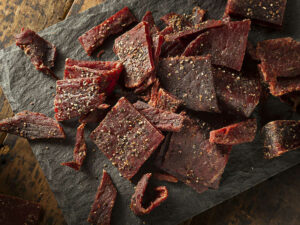
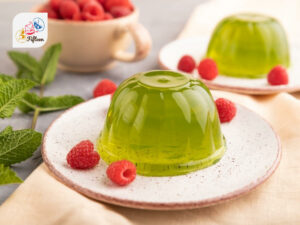
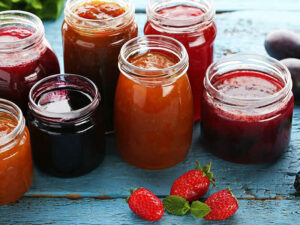
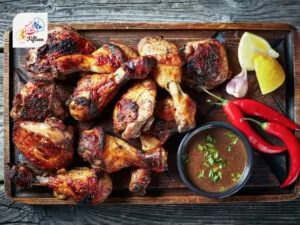
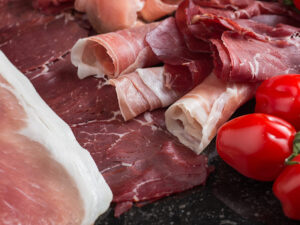
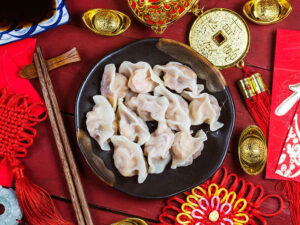

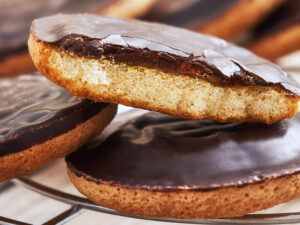
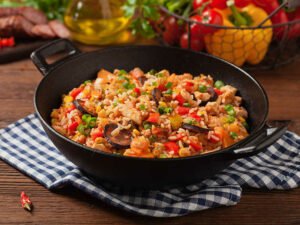
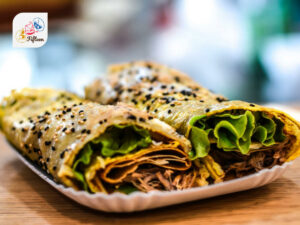
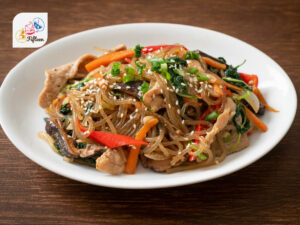
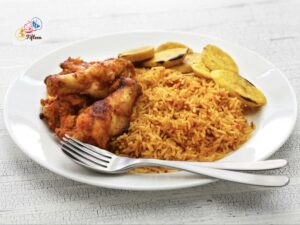
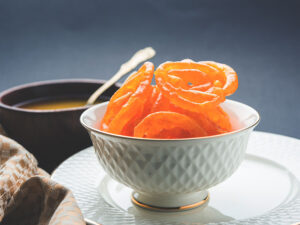
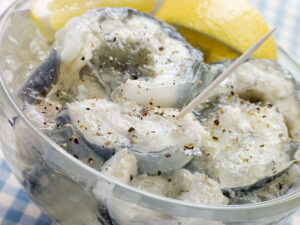
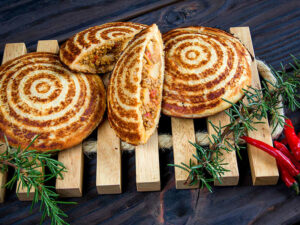
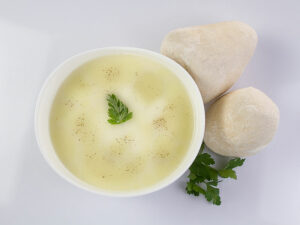
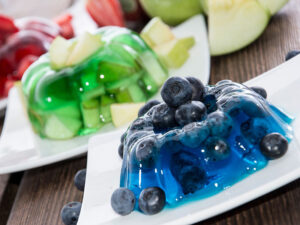
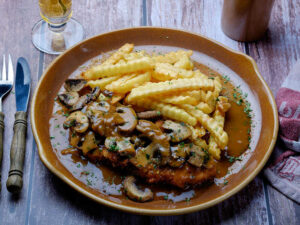
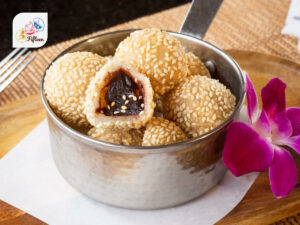
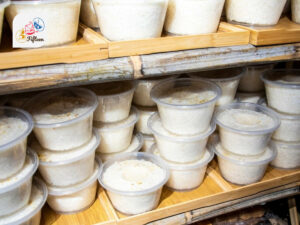
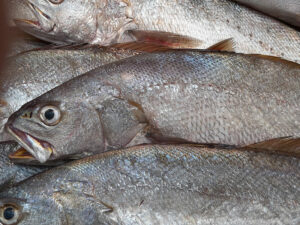
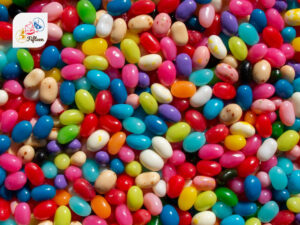
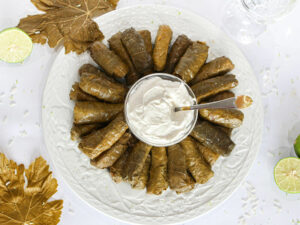
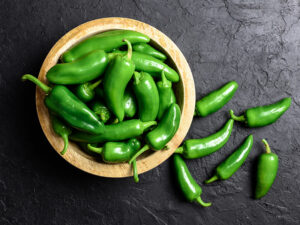
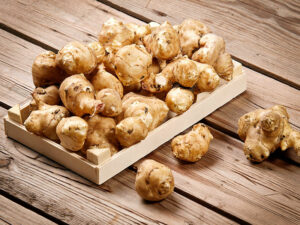
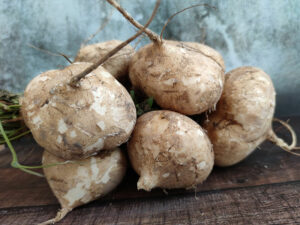
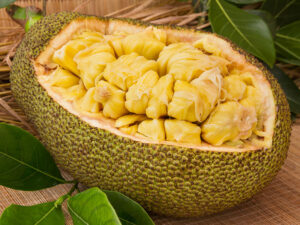
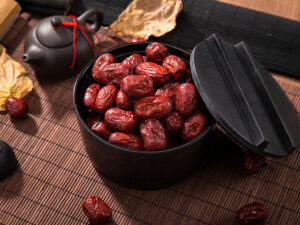
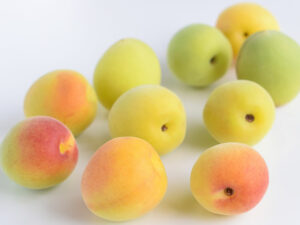
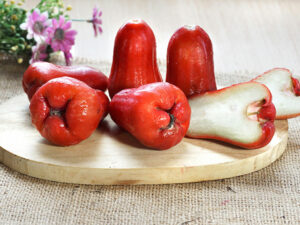
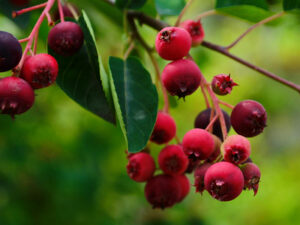
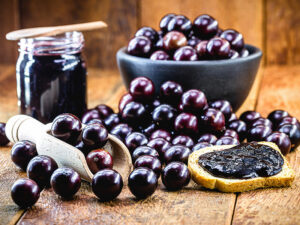
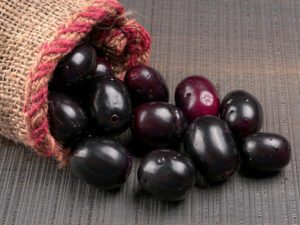
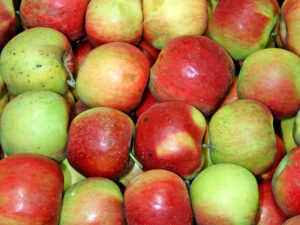
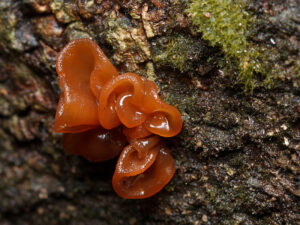
Jamie Scott
Editor in Chief, Senior Content Writer
Expertise
Home Cooking, Meal Planning, Recipe Development, Baking and Pastry, Food Editor, Cooking-video Maker, Western Food Evaluation Expert
Education
Le Cordon Bleu College of Culinary Arts
Local Community College, New York, NY
Jamie Scott is a skilled culinary expert and content creator specializing in Western cuisine. With over 15 years in the culinary field and formal training from Le Cordon Bleu, Paris, Jamie deeply understands how to blend nutrition with delicious flavors. His passion for cooking matches his commitment to making healthy eating accessible and enjoyable.
On Fifteen.net, Jamie brings a fresh perspective to classic dishes and beverages, offering readers insightful recipes, cooking tips, and a fresh view on meal planning that emphasizes taste, health, and simplicity.